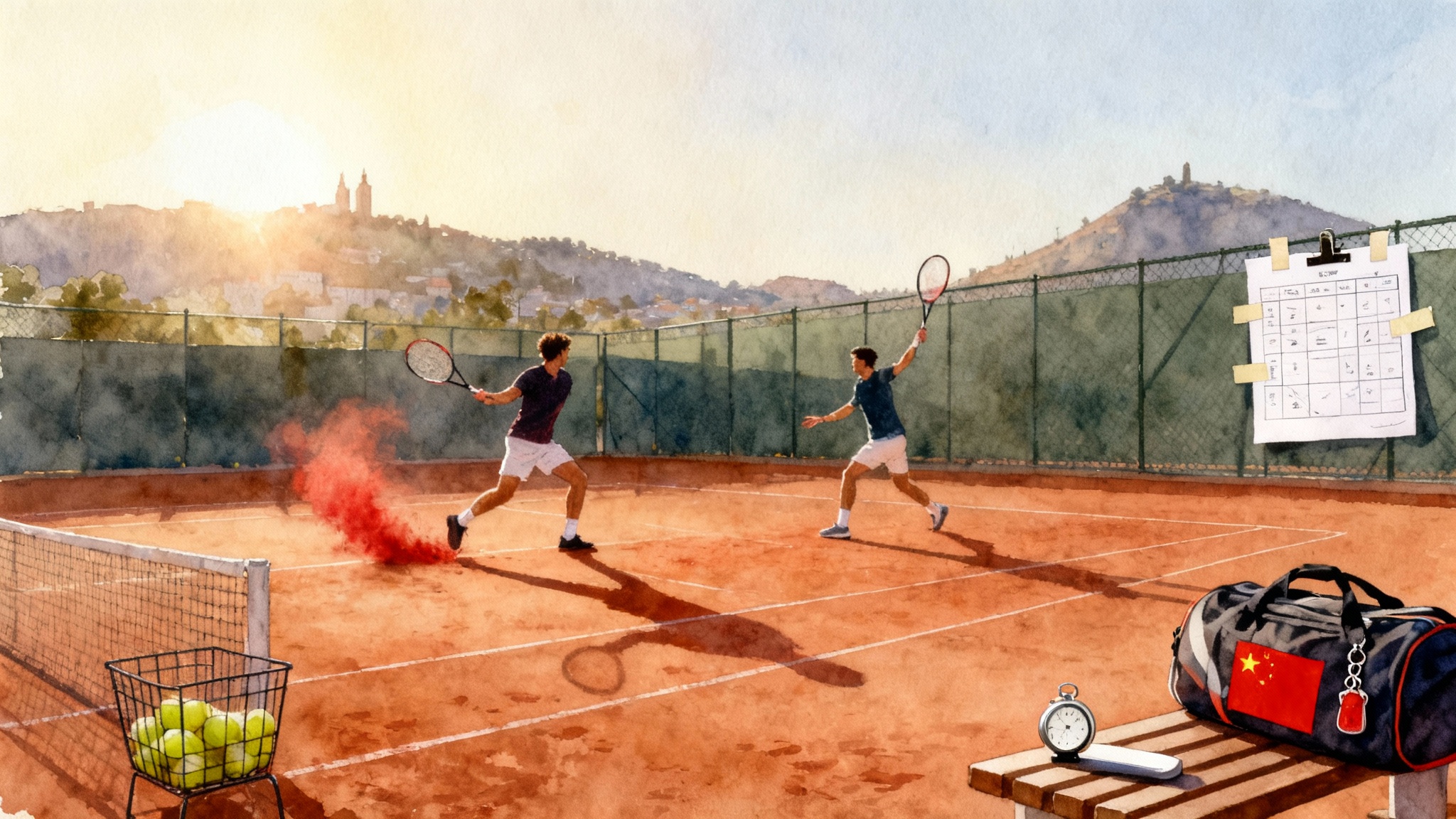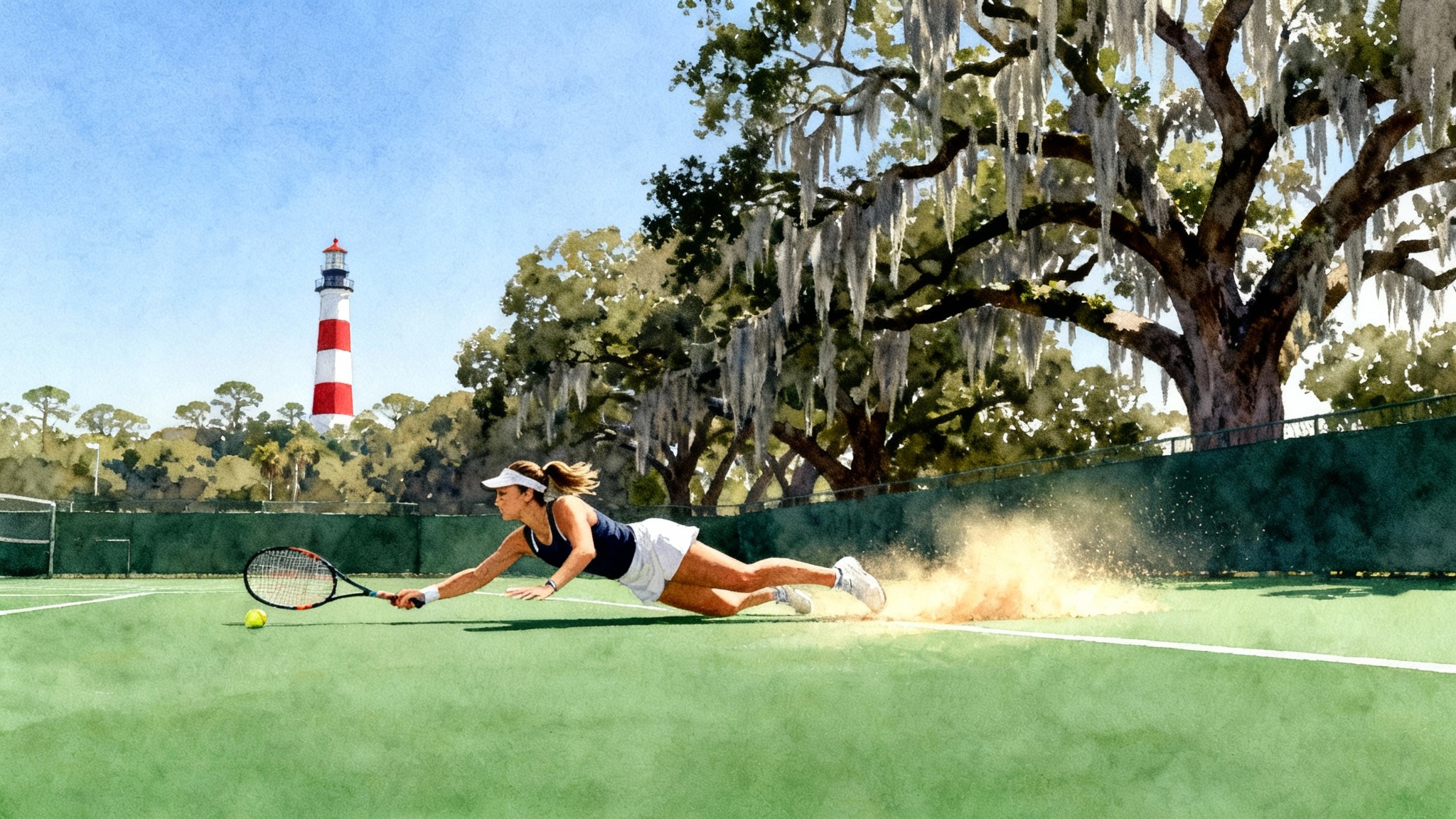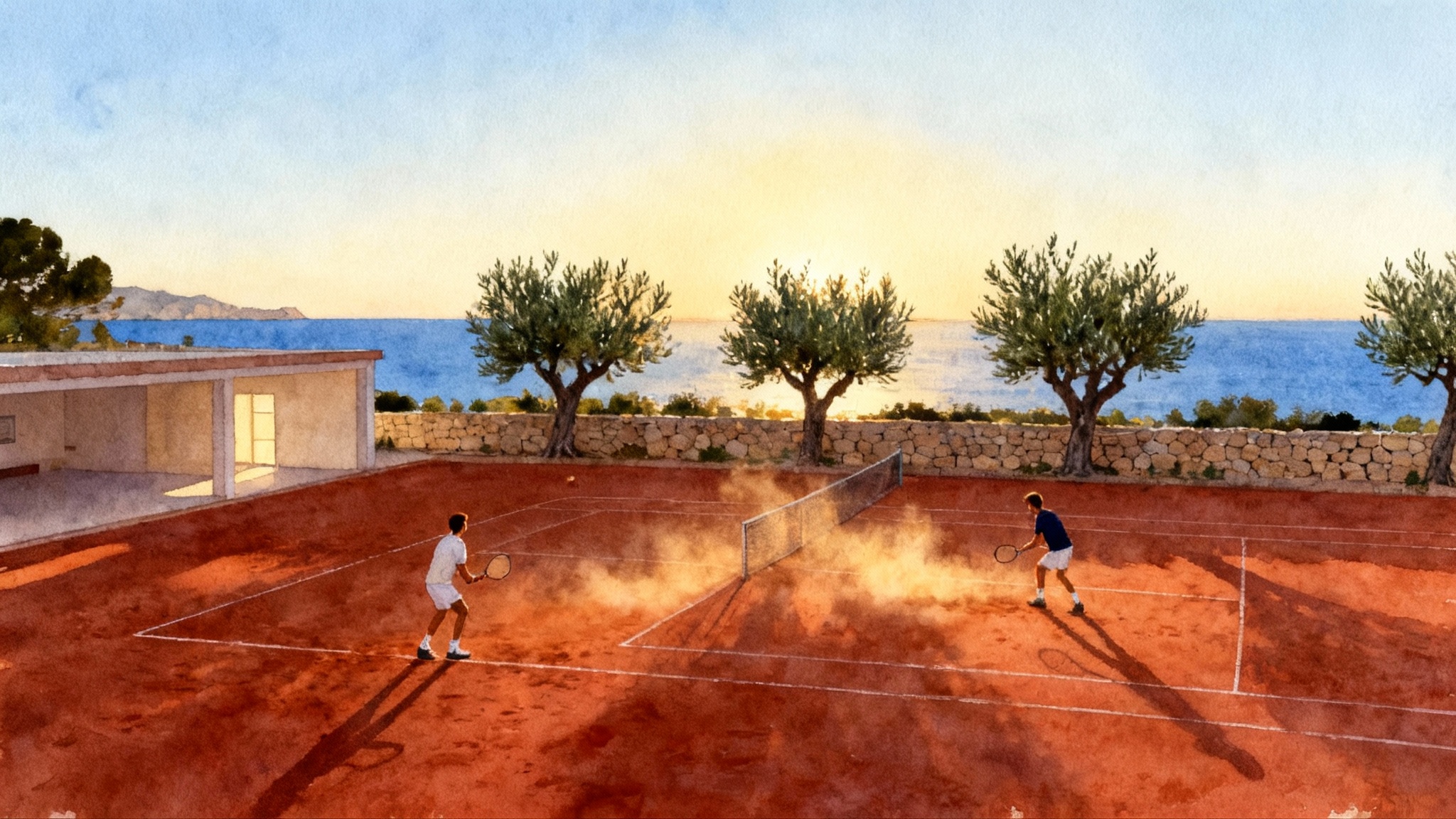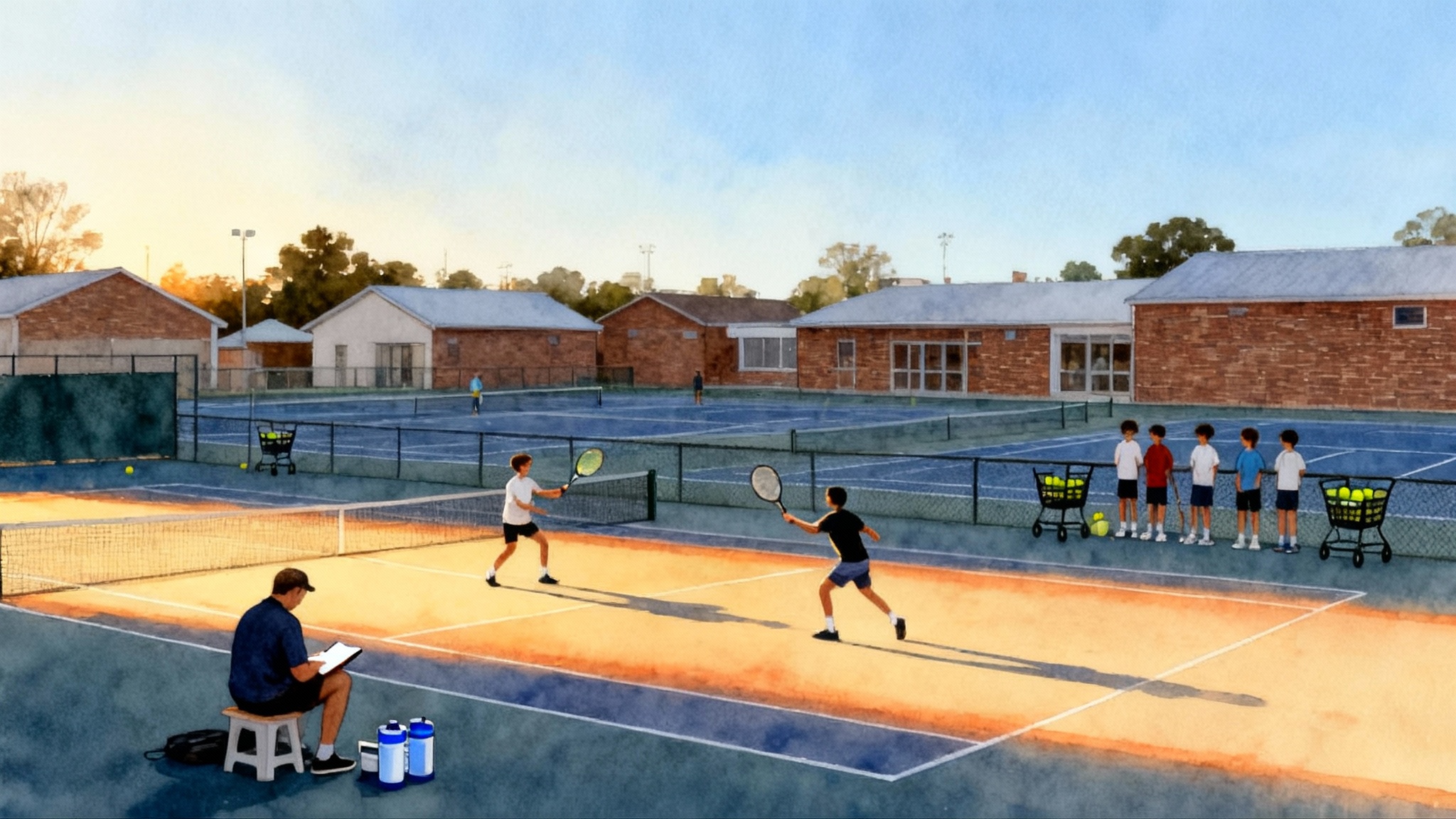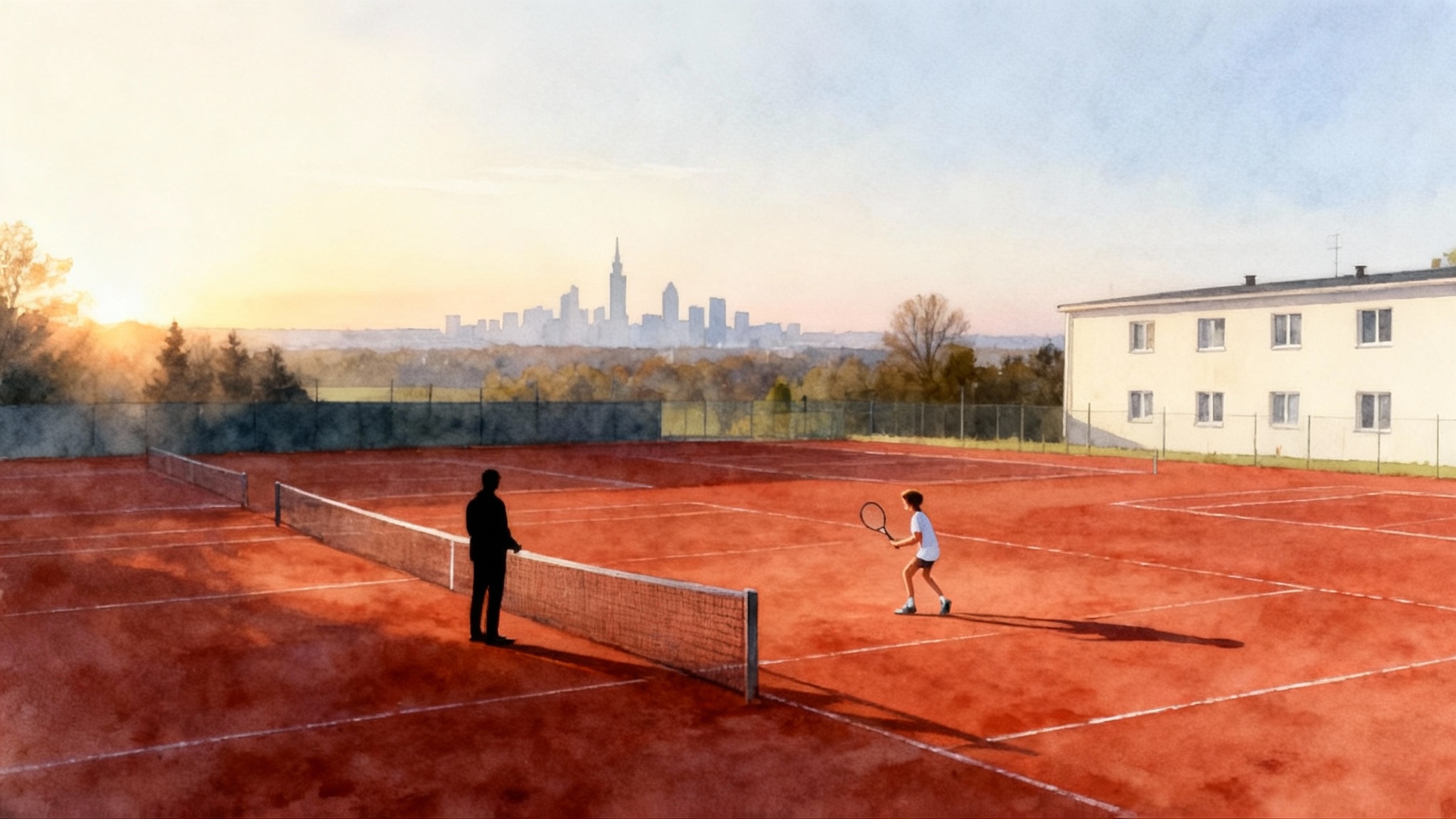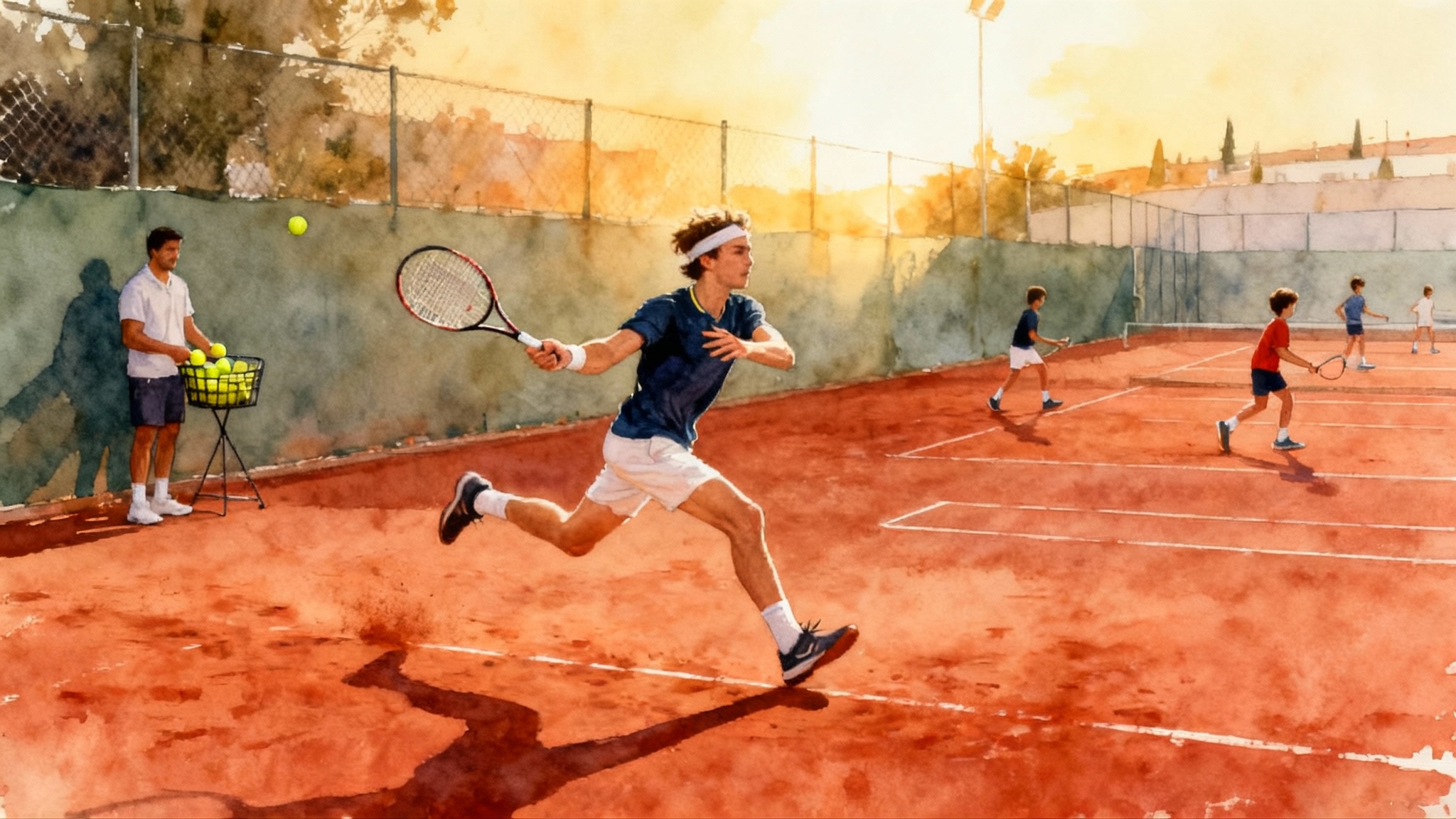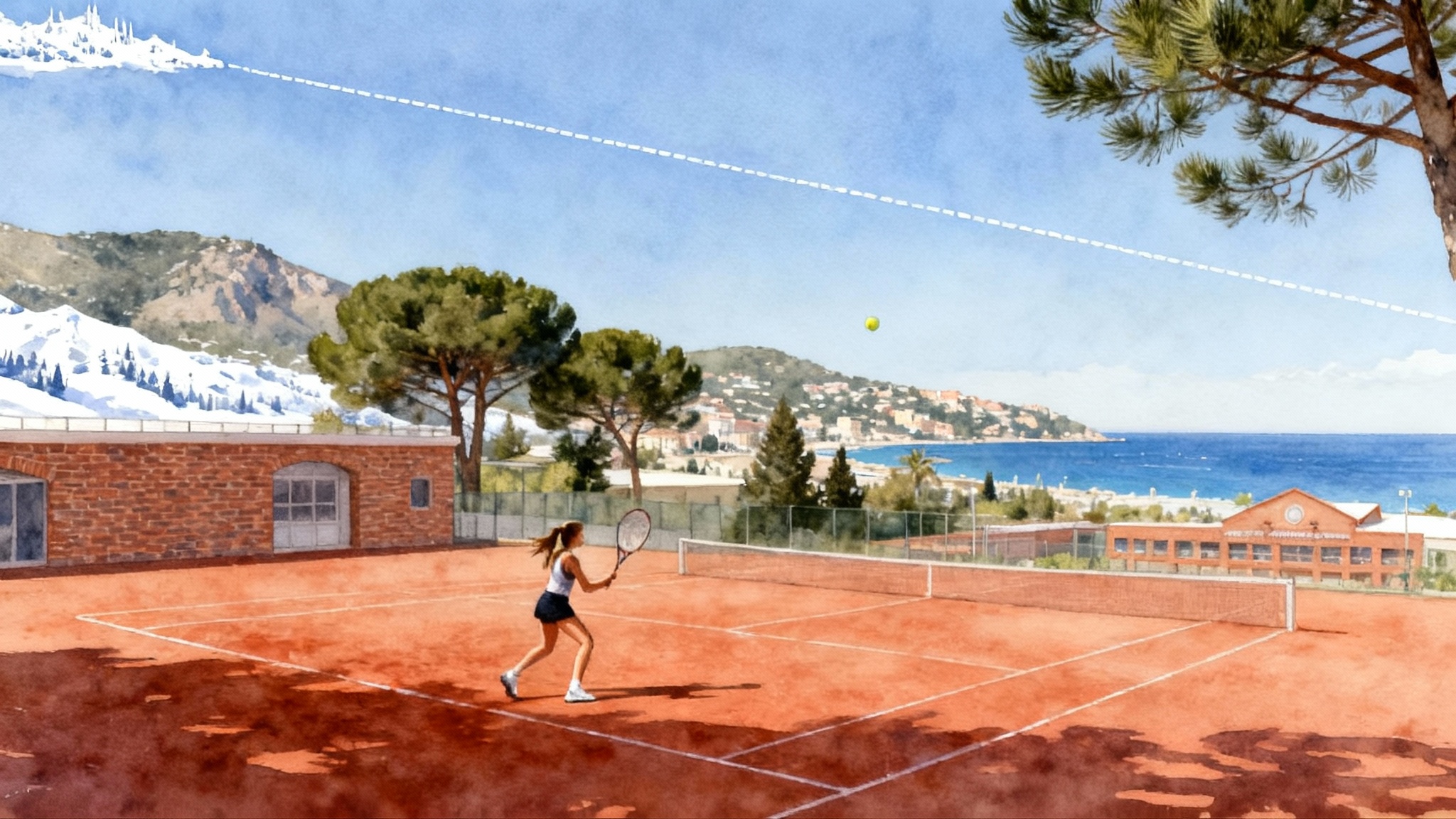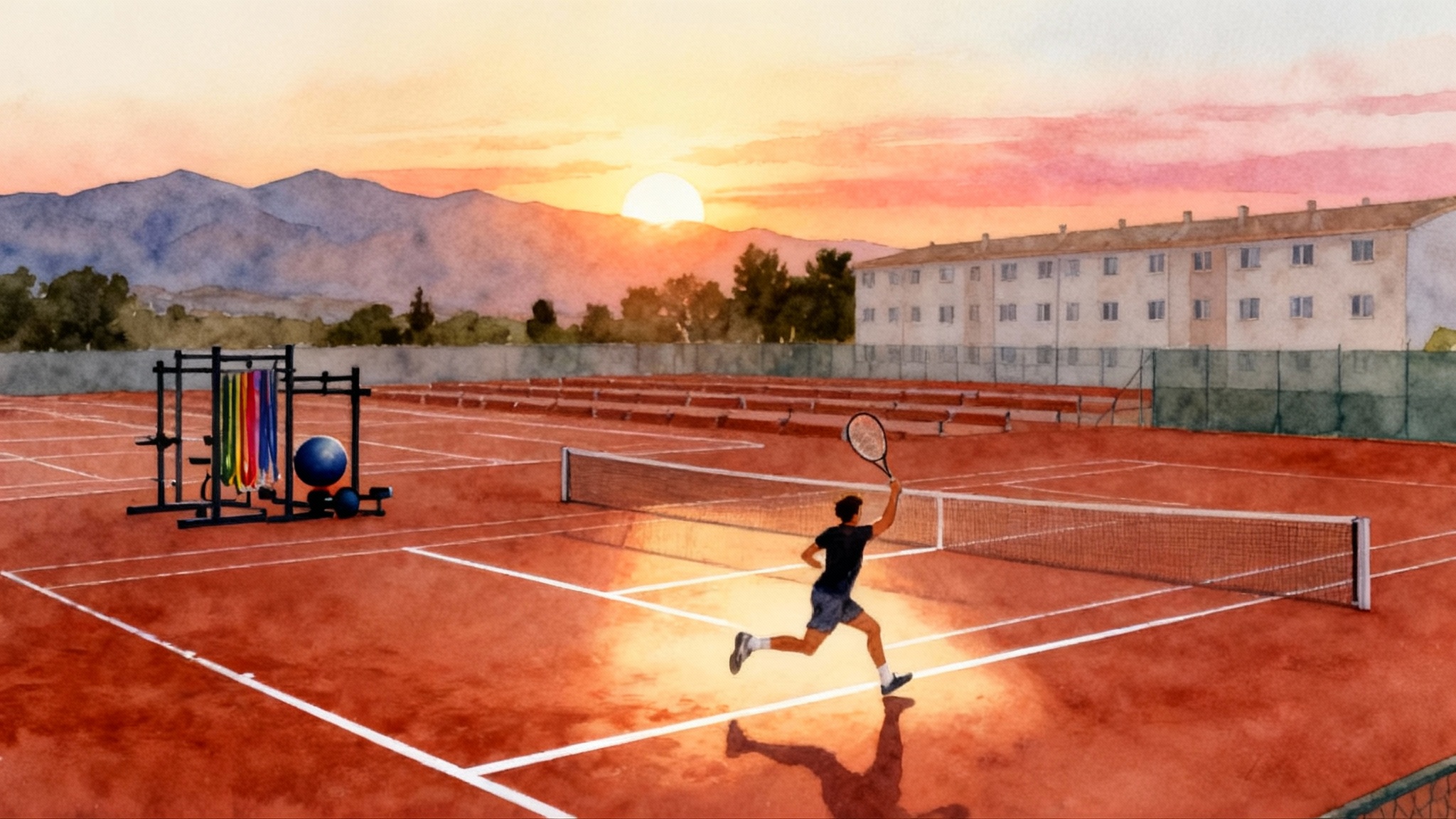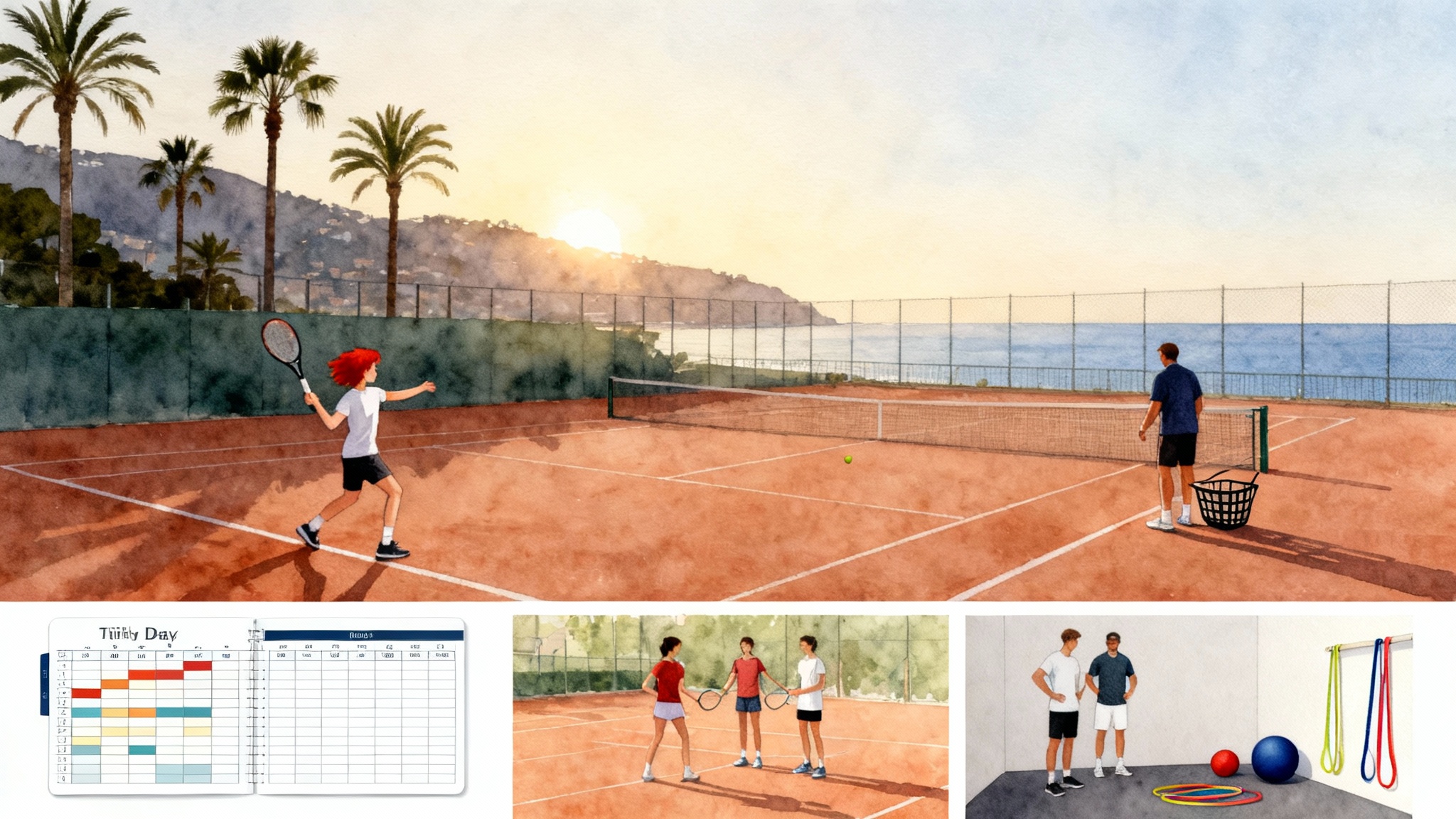Jack Draper’s UK pathway to Indian Wells and the Top 10
From Sutton and Weybridge to the LTA National Tennis Centre, Jack Draper’s club and academy roots plus centralized support and targeted strength work built the engine for his 2025 Indian Wells title and Top 10 breakthrough.
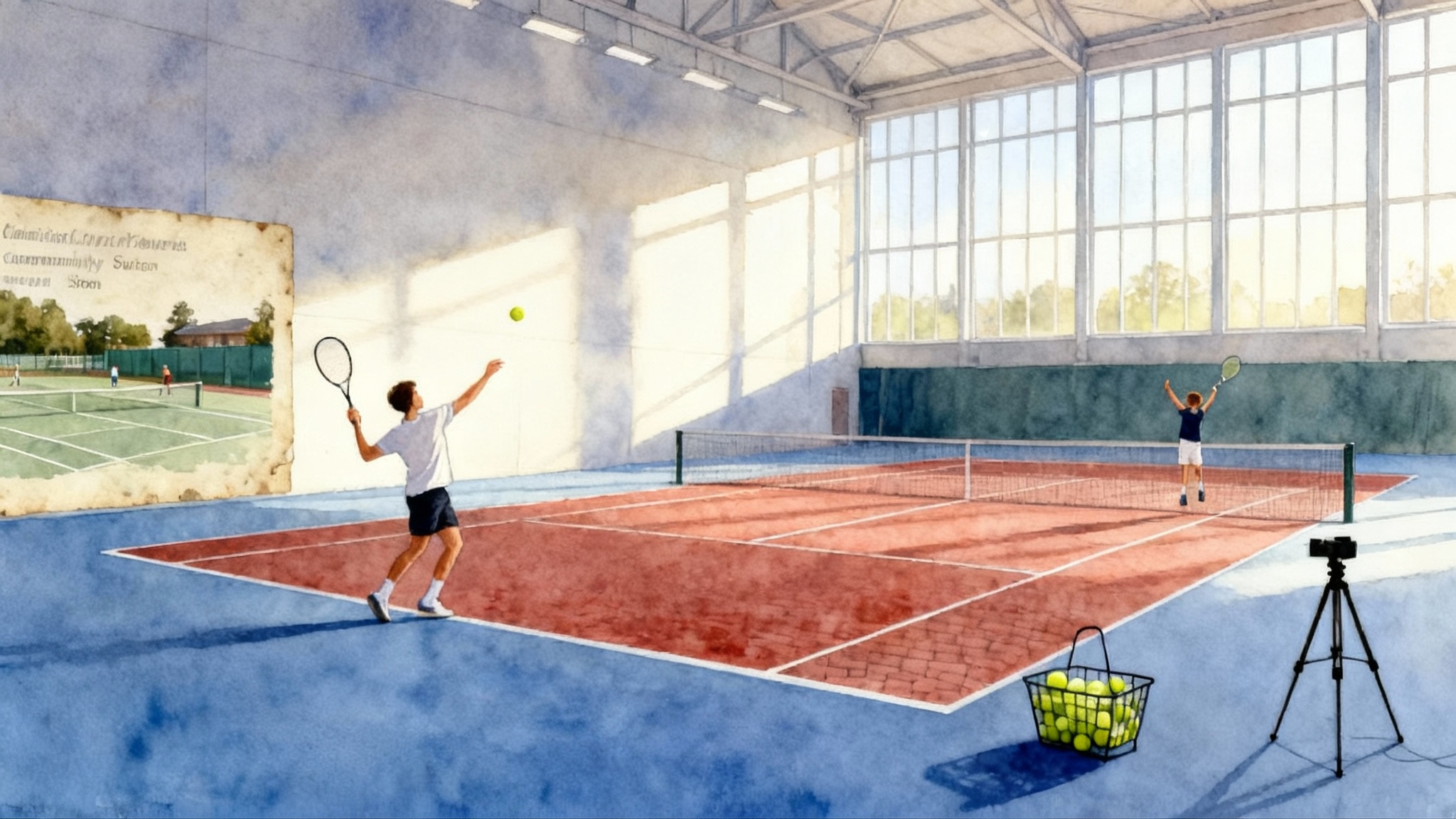
A British blueprint behind a desert breakthrough
Jack Draper’s run to the 2025 BNP Paribas Open crown in Indian Wells was not a bolt from the blue. It was the payoff of a decade spent in a distinctly British pathway that compounded small wins into a big one. On March 16, 2025, the 23-year-old dominated Holger Rune 6-2, 6-2 to lift his first Masters 1000 trophy and secure his debut in the Top 10, the kind of result that hardens hype into substance. That milestone is well documented in the Indian Wells title and Top 10 coverage. The more useful story for parents and coaches is how he got there.
The map has three stops: a local club that made tennis feel like home, a regional academy that built weapons, and a national center that wrapped those weapons in sports science. The pattern is replicable, even if the talent is rare. For a parallel on how community roots can scale, see how community access at JTCC shaped Frances Tiafoe.
From Sutton to Weybridge to Roehampton: the verified route
-
Club roots, Sutton Tennis and Squash Club: Draper’s first rallies were not in a themed high-performance complex. They were in Sutton, where courts and community were close and his mother, Nicky, could keep the sport playful while teaching basic shapes. This phase emphasized frequency over intensity. Lots of short hits, lots of touches, lots of ways to love the game.
-
Regional academy, Weybridge Tennis Academy with Justin Sherring: By primary school, Draper’s training graduated to Weybridge. Justin Sherring, a coach with a reputation for player-first development, helped assemble the left-hander’s patterns. Think of this stage like moving from learning words to writing paragraphs. Serve locations became deliberate. The forehand gained identity. Competing in county and regional events added the syntax of pressure.
-
Centralized performance, LTA National Tennis Centre under James Trotman: In his late teens and early twenties, Draper committed to the Lawn Tennis Association system at Roehampton, training part of the year at the National Tennis Centre. The LTA confirms his beginnings in Sutton and current setup with National Coach James Trotman at the National Tennis Centre in Roehampton in its LTA profile and NTC support. The National Tennis Centre adds layers unavailable at most clubs: a high-performance gym floor with heavy and power days, an on-site sports medicine unit, performance analysis, and a consistent pool of hitting and sparring partners.
The result is a common British hybrid: a player raised inside a club and regional academy culture who uses the National Tennis Centre as a science and intensity accelerator. You can think of it like learning to drive in a safe cul-de-sac, mastering traffic on local roads, and then visiting a test track where engineers tune the engine. For another example of clear weapons forged in clubs, compare De Minaur’s Spanish club roots.
Training patterns that traveled well
1) Indoor hard-court volume that fits the British calendar
The United Kingdom’s climate nudges growing players toward indoor hard courts for much of the year. For a left-hander with big serve potential, that is an asset. Repetition on medium-true indoor acrylic courts rewards precise toss placement, clear targets, and serve plus one patterns.
A representative microcycle for an upper-teen left-hander who is closing in on professional standards might look like this in winter:
- Two serve emphasis days: 45 to 60 minutes of dedicated serve work, with a tracked ratio of wide-on-ad to T-on-deuce locations. Pair each serve rep with the first two forehand patterns so the habit chain stays intact.
- Two pattern-and-spar days: 90 minutes of situational points, heavy on crosscourt forehand patterns that open the inside-in. Track hold percentage in two-ball points after a wide serve.
- One return day: Return blocks of 20 balls each from both courts against a mix of flat and kick serves, followed by 30 minutes of neutral-to-offense point starts.
- One light skills day: Volley touch, drop-shot disguises, mid-court decision games. Keep the nervous system fresh.
The volume is not exotic. The efficiency is. Indoors, you can get 500 quality touches in the time that outdoor wind would have eaten up 150 corrections.
2) Lefty serve and forehand patterns that win on slow and fast courts
Draper’s tennis identity is simple to describe and hard to stop.
- Ad court serve wide, then forehand into the open deuce side. If the returner cheats, the T serve opens the hotline for a short forehand or drive volley.
- Deuce court body serve to jam the right-hander’s backhand, then step around for an inside-in forehand that finishes the point without going near the opponent’s forehand.
- Forehand crosscourt heavy to push the opponent deep and to the sideline, then a sudden change to inside-in when feet are stranded.
Those patterns were born in Weybridge reps and matured in Roehampton scouting. The Indian Wells courts, which tend to play firm but grab topspin, rewarded his lefty spin and height, turning crosscourt forehands into heavy, shoulder-height problems. If you want desert reps of your own, the Desert Tennis Academy in Palm Desert offers accessible training blocks near Indian Wells.
3) Growth-spurt strength that is boring for a reason
At about 6 feet 4, Draper grew into the frame that could carry his power. Growth spurts create both opportunity and risk. Bones lengthen quickly. Tendons and soft tissue lag. The prescription is not complex, but it requires discipline.
- Posterior chain strength twice weekly: hinge, squat pattern, and hip extension with a clean technique standard. Use submaximal loads with speed intent. The goal is resilient hips and hamstrings that can absorb and produce force without tugging at the lower back.
- Shoulder and scapula control: two microdoses of 15 to 20 minutes each on days with heavy serving. Focus on external rotation, upward rotation, and lower trap activation. Think two songs, not two hours.
- Landing and change-of-direction mechanics: short sets of deceleration and re-acceleration drills on a non-fatigued nervous system. The quality is in the first five steps, not the twentieth.
At the National Tennis Centre, this work can be tracked with simple markers: session rating of perceived exertion, jump height or force plate asymmetry when available, and the most powerful of all, a coach’s trained eye. The point is not to collect data. It is to make weekly decisions: push, hold, or pull back.
The pivotal decisions that unlocked the jump
Staying in the United Kingdom system instead of moving abroad
Many British families feel the pull of Spanish academies or American campuses in the later teens. Draper’s team stayed anchored in the club-academy-National Tennis Centre loop. The upside was continuity and a shared language between childhood coaches and national staff. The logistical benefits were real. London remains a manageable hub for European travel, and access to physio and strength support is consistent, not seasonal.
The cost of staying home can be fewer sun-soaked hours on clay. The solution is planning. Build short, intense clay blocks in Europe around specific competition runs rather than vague all-spring relocations. Draper’s climb shows you do not need to uproot to adapt, you need to schedule with intent.
Integrating sports science without drowning in it
The National Tennis Centre’s tool kit includes performance analysis, medical review, and strength and conditioning. The trap is to mistake tools for a plan. Draper’s environment used them to answer specific questions.
-
Question: Is the ad-court wide serve losing shape late in matches?
Answer: Track spin rate and kick height indirectly by watching second-bounce depth and returner contact height in video. If it drops during heavy weeks, adjust the lower-back and hip workload in the gym. -
Question: Is the forehand heavy enough on slow courts?
Answer: Use a two-week corridor of forehand-bias pattern work, then test in live sets against a right-hander who likes to take the ball early. If depth collapses late, scale back conditioning for 72 hours and bias recovery.
Science serves the decision, not the other way around.
Managing injuries like a professional
Draper’s rise was punctuated by setbacks. The hip grumbled in January. The left arm flared in midsummer. That is not failure. It is a reminder that power must be fed and protected. Three habits stood out.
- Early honesty: if a joint or tendon is trending in the wrong direction, reduce serve volume before you reduce everything else. The aerobic engine can be fed on a bike or in pool intervals while the shoulder takes a breath.
- Micro-swaps: on a day when joints are touchy, replace 20 minutes of serve work with 20 minutes of return starts and plus-two forehands. Keep the pattern chain intact while giving the joint a break.
- Competition guardrails: avoid the impulse to add one more event to a good run. End the block on a high note, then absorb the training before another push. The win is not the trophy. It is the tissue that still wants to work on Monday.
What parents can copy, and when to change lanes
Parents often ask the same two questions: when should we move from a local academy to national programs, and how do we structure competition blocks so the player climbs without breaking down? Here is a practical framework drawn from the Draper map.
When to transition from club-academy to national support
Use criteria, not vibes. If three of these six boxes are ticked, you are ready to explore national access days, camps, or a partial training base at a national center.
- Training tolerance: the player completes 10 to 12 high-quality hours per week for eight consecutive weeks without joint flare-ups or grade-one muscle strains.
- Pattern clarity: two serve patterns and two forehand patterns are producing above 65 percent hold rate in practice games to four points on the ad and deuce courts.
- Competitive signal: the player is consistently reaching late rounds in national-level events at their age, or is punching above weight in older age groups.
- Growth window: during or just after a growth spurt, when a coordinated strength plan can prevent soft-tissue troubles.
- Coach alignment: the club or academy coach is eager to collaborate with national staff and welcomes joint planning, not turf protection.
- Logistical sanity: travel to the national center can be done without turning school and family life into chaos.
Start with blended access. Keep two thirds of training at the home base for continuity. Layer in one third at the national center for targeted blocks: serve overhaul weeks, physical testing and planning, or match-simulation camps.
How to structure competition blocks
Competition should be the test of training, not the replacement for it. Borrow the central idea that helped Draper: build your calendar in blocks and give each block a theme.
- Pre-season block, 4 to 6 weeks: volume-first training, pattern rehearsal, incremental load build in the gym. One tune-up event at the end to check systems under pressure.
- Spring block, 6 to 8 weeks: indoor hard into European clay transition. Two back-to-back events, then a week at home, then one event. Keep a rest day after travel days and a light day before quarterfinals if the body is sore.
- Summer block, 6 weeks: fast courts or grass. Serve plus one emphasis. Enter one event as a stretch goal rather than an obligation.
- Autumn block, 6 to 8 weeks: indoor swing. Two tournament clusters of two events each with a 10-day training pit stop between them to repair and upgrade.
Within each block, protect two non-negotiables.
- A 72-hour recovery window after the final match of a cluster where strength is maintained, not chased. Two short gym sessions, one pool session, lots of sleep.
- A live-set test 72 hours before the next event, with serve targets and plus-one patterns charted. If the player cannot hit the target map at 80 percent, downgrade the event expectations or skip qualifying.
What to do each week
Use this simple weekly scaffold in tournament weeks. It works for juniors and pros with minimal tweaks.
- Monday: arrival and 45 minutes of serves with targets, 45 minutes of pattern points. Ten-minute shoulder care and 15 minutes of hip mobility.
- Tuesday: light set play, return starts, and short sprints. If possible, a quick scout of likely opponents.
- Wednesday: first match. Post-match, five-minute hip and scapula routine and five minutes of breath work.
- Thursday: short court plus overhead work to refresh rhythm without fatigue.
- Friday onward: stay boring. Keep the same short routines that got you here. No new magic.
Why the UK club-academy plus NTC model worked for Draper
- The club gave him joy and frequency. A child who loves court time will eventually love practice time.
- The academy gave him weapons. A left-hander without a clear serve map is a neutral player. A left-hander with two dependable serve patterns is a problem.
- The National Tennis Centre gave him a platform to scale. Strength and conditioning, sports medicine, and analysis did not change who he was. They made it repeatable under stress.
This is the subtle lesson from Indian Wells. Draper did not become someone else. He became the same player more often.
A final word for parents
If you are navigating a promising junior’s road, think in chapters, not leaps. Start by making the club a second home. When the player’s patterns are forming and their body is changing, layer in regional academy expertise. When training tolerance and competitive signals are strong, add national-center blocks for precision, not prestige.
Use two filters for every decision. Does this make our player’s strengths show up more often under pressure. Does our calendar protect the two joints we know they overload. If the answer is yes to both, you are likely building momentum.
Jack Draper’s Indian Wells title did not spring from a single brave choice. It grew from many small, specific choices that lined up over years. That is the kind of story a family can copy. And it is the kind of plan a player can believe in when the next big match starts.
